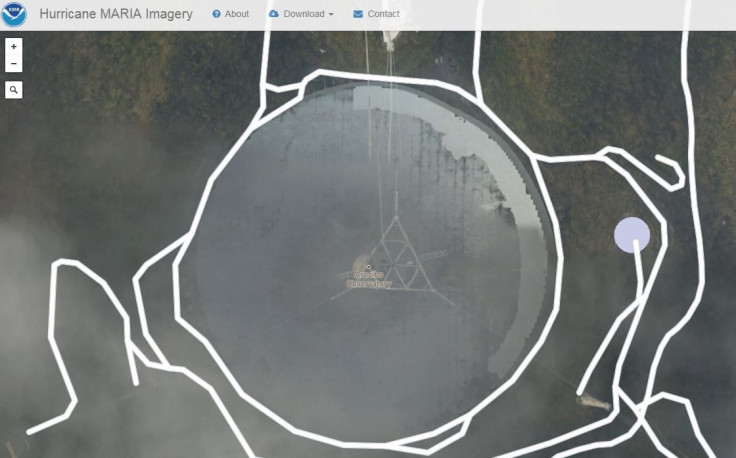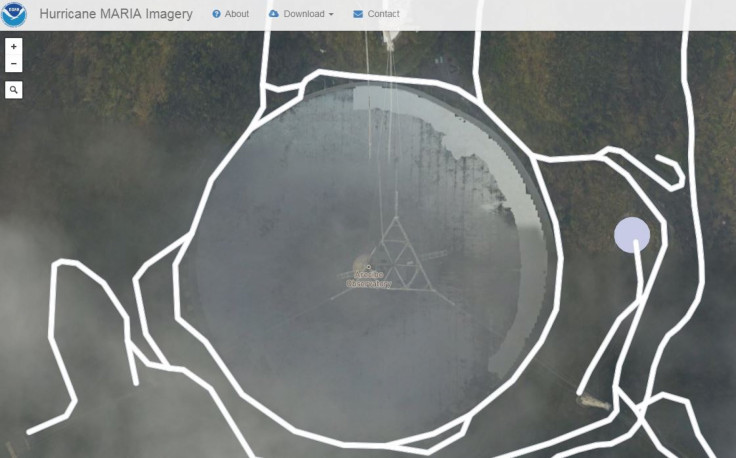Arecibo Observatory: Puerto Rico Telescope May Restart Friday
Puerto Rico is suffering following Hurricane Maria’s direct hit of the island last week. The majority of the people on the island are without safe water and there is no electricity. Homes, buildings and infrastructure were destroyed by the storm. But one area, where the Arecibo Observatory sits, is doing surprisingly well.
“News from the observatory is a lot better than we expected considering the devastation of Puerto Rico,” Joan Schmelz, deputy director of the observatory, told International Business Times
The observatory sits about 60 miles southwest of San Juan. It was built out of tens of thousands of perforated aluminum panels into a limestone sinkhole. The telescope is a radio telescope that mirrors radio waves with wavelengths between three centimeters and six meters.

Engineers are still learning the extent of the damage that the telescope and observatory suffered, but they’re hopeful that it might be up and running as early as Friday. The assessment process has been day-to-day, “What we found yesterday determines what we do today,” said Schmelz.
Engineers have been inspecting the structures and the telescope for days now, determining what damage was inflicted and whether everything is structurally sound. So far, the news has been good, if it continues to be good, “We could observe tomorrow with the main telescope,” Schmelz said.

That news Schmelz and the team are waiting on is about the status of the receivers as well as the platform. “Everything with the motion and control of the moving parts of the platform and then the condition of the receivers,” she said. Earlier this week the engineers were inspecting the platform of the telescope itself, that was found to be structurally sound, Schmelz said. They were also able to move the tracking components of the telescope which allowed for a more detailed inspection that they were hoping to complete Thursday.
Schmelz was attending a conference in the United States when the hurricane hit and hasn’t been able to make it back since. The first contact she made with anyone on the island was with her husband, via a Ham radio operator based in Connecticut a few days after the storm. When her flights to Puerto Rico were canceled she decided to head to the the Universities Space Research Association headquarters in Baltimore. When her flight landed there from Atlanta, she turned on her phone and had a text from the operator telling her that her husband, who was in Puerto Rico during the storm, was safe.
Since then she’s been getting daily updates on the observatory from her staff who got hold of a SAT phone. But she still only gets one update phone call a day. That’s frequent enough though that she knows the status of the observatory and telescope as well as her staff.
“All the staff that chose to shelter at the observatory and their families, they are safe,” Schmelz said. The staff and their families are given the option to stay at the observatory during storms or to stay at their own homes.
“The observatory has a lot of concrete buildings that are some of them are between hills,” she said. This makes it an ideal hurricane shelter. By now, the roads to the observatory are clear, a diesel tanker truck even made it up to the road, and some employees who have fuel and a clear path from their homes are headed back to work Thursday.
Inspections Thursday will determined whether or not the telescope is fit for making continuing observations.
© Copyright IBTimes 2025. All rights reserved.




















